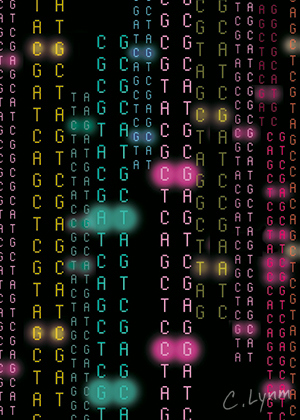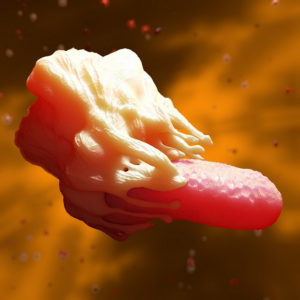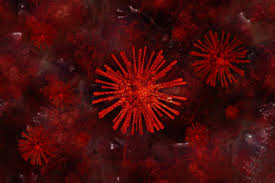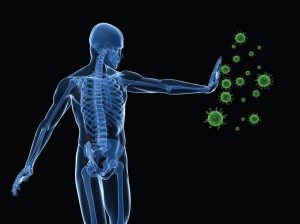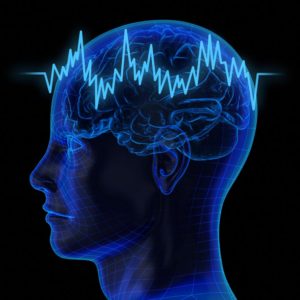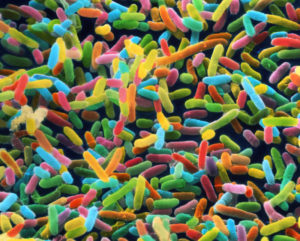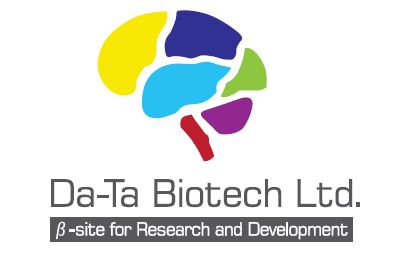Abstract
The DNA-repair capacity in somatic cells is limited compared with that in germ cells. It has remained unknown whether not only lesion-type-specific, but overall repair capacities could be improved. Here we show that the DREAM repressor complex curbs the DNA-repair capacities in somatic tissues of Caenorhabditis elegans. Mutations in the DREAM complex induce germline-like expression patterns of multiple mechanisms of DNA repair in the soma. Consequently, DREAM mutants confer resistance to a wide range of DNA-damage types during development and aging. Similarly, inhibition of the DREAM complex in human cells boosts DNA-repair gene expression and resistance to distinct DNA-damage types. DREAM inhibition leads to decreased DNA damage and prevents photoreceptor loss in progeroid Ercc1−/− mice. We show that the DREAM complex transcriptionally represses essentially all DNA-repair systems and thus operates as a highly conserved master regulator of the somatic limitation of DNA-repair capacities.
Main
Genomes are constantly exposed to exogenous and endogenous genotoxic insults. DNA-repair proficiency depends on cell type and cell cycle stage, and is particularly different in germ cells than in somatic cells. In germ cells, DNA repair is highly efficient to maintain genome integrity throughout generations; in somatic cells, DNA repair maintains genome integrity early in life, but operates inefficiently during later, post-reproductive stages1. Although germlines have mutation rates that are orders of magnitude lower than those in somatic tissues2,3,4, the high mutation rates in the soma increase in an age-dependent manner across species5. In C. elegans, somatic cells mostly terminally differentiate during embryogenesis and are entirely post-mitotic in the adult, whereas germ cells retain mitotic and meiotic activity. Germ cells survey their genome for helix-distorting lesions by global-genome nucleotide excision repair (GG-NER) and accurately repair DNA double-strand breaks (DSBs) through homologous recombination repair (HRR)6,7,8,9,10. In somatic cells, GG-NER11 and HRR8,12,13,14 are dispensable, as they instead use error-prone non-homologous end joining (NHEJ), and only actively expressed genes are surveilled by transcription-coupled NER (TC-NER)7,9. The resistance to DNA-damage-driven developmental growth impairment and functional deterioration during aging is thus limited by the restriction of somatic DNA-repair capacities. Also in mammals, the engagement of accurate DNA-repair systems depends on the cell cycle and differentiation state15. Not only HRR, but also additional repair pathways, are enhanced during replication, like single-strand annealing, microhomology end joining and long-patch base-excision repair (BER)16,17,18. By contrast, cell types that are either quiescent, terminally differentiated, or senescent have limited DNA-repair capacities.
Cellular quiescence and differentiation are controlled by the DREAM complex, formed by the Dp/Retinoblastoma(Rb)-like/E2F and the MuvB subcomplexes19. In C. elegans, the DREAM complex comprises subunits encoded by genes that were first discovered as synthetic multivulva (synMuv) class B genes, owing to their role in cellular differentiation in combination with mutant proteins encoded by other synMuv gene classes20,21,22. Single mutations in these genes were sufficient to promote germline-like characteristics in the soma, including misexpression of germline genes23,24,25,26. In humans, in addition to the highly conserved repressor function in quiescence, the components of the DREAM complex can associate with other proteins and instead function as a transcription activator during the cell cycle27,28,29. The specific assembly of the repressive DREAM complex in G0 is regulated by the DYRK1A protein kinase, which, through phosphorylating LIN52, can bind to p130 and form the complex30.
Here, we report that the DREAM complex represses a wide range of DNA-repair genes in the soma of C. elegans. Mutations in genes encoding DREAM components trigger DNA-damage resistance in somatic tissues against a broad range of genotoxic insults, including ultraviolet (UV) lesions, alkylations, interstrand crosslinks (ICLs) and DSBs. DREAM mutants showed accelerated lesion removal and suppressed the sensitivity to DNA damage of animals deficient in DNA-repair genes. In human cells, the DYRK1A inhibitors harmine and INDY31,32 triggered the induction of DREAM-targeted DNA-repair genes and conferred resistance to distinct DNA-damage types. In vivo, harmine treatment reduced DNA damage and apoptosis in the retinas of Ercc1−/− progeroid mice. We thus establish that pharmacologically targeting the DREAM complex could be applied to augment genome stability. We propose that the DREAM complex represses the expression of various DNA-repair mechanisms and thus limits DNA-repair capacities. Therefore, inhibition of DREAM could overcome the consequence of dysfunction in single DNA-repair systems and DNA-damage-driven aging.
Results
DDR gene promoters carry the CDE-CHR DREAM-binding motif
To investigate the mechanisms underlying transcriptional regulation of DDR genes in C. elegans, we assessed whether specific transcription-factor-binding sites might be overrepresented in DDR gene promoters. An unbiased DNA-motif enrichment analysis of the 211 DDR genes (Supplementary Table 1) revealed a significant enrichment of the DPL-1-, EFL-1- and LIN-15B-binding motifs (Fig. 1a). DPL-1 and EFL-1 form the E2F–DP heterodimer, which directly contacts promoters by binding to the cycle-dependent element (CDE). E2F–DP is linked through the pocket protein LIN-35 to the MuvB subcomplex, which binds the cell cycle genes homology region (CHR) in promoters to then form the DREAM transcriptional repressor complex33,34,35. We identified the CDE-CHR motif in the promoters of 125 of the 211 DDR genes (Fig. 1b), suggesting that the DREAM complex is a regulator of DDR genes.
DREAM-complex mutants confer DNA-damage resistance
We next determined whether mutations in DREAM components influence DNA-damage sensitivity. We tested UV-induced DNA lesions because they impact developmental growth and the longevity of the animals9. UV-B irradiation induces formation of cyclobutane pyrimidine dimers (CPDs) and pyrimidine (6–4) pyrimidone photoproducts (6–4PPs) that are repaired by NER. Except for the two primordial germ cells, all 558 cells of the L1 larvae are somatic cells, of which 90% are terminally differentiated36. We exposed synchronized DREAM-mutant L1 larvae to UV and scored developmental growth 48 hours (h) later, counting the developmental stages for all the worms, from L1 to the consecutive L2, L3 and L4 larval and adult stages. Surprisingly, worms with loss-of-function mutations in lin-52, dpl-1, efl-1, lin-53 or lin-35, which encode DREAM-complex components, showed a significant improvement in somatic development compared with wild-type (WT) worms following UV exposure (Fig. 1c and Extended Data Fig. 1a). Even though lin-35 mutants showed a developmental delay in the absence of UV26, they proceeded through development more rapidly than did WT worms at high UV doses (Fig. 1c).
Double-mutant worms, with mutations in two genes (lin-52; dpl-1 and lin-52; efl-1), showed improved developmental growth, similar to that in lin-52 mutants, indicating that their encoded DREAM-complex subunits conferred UV resistance (Fig. 1d and Extended Data Fig. 1b). By contrast, worms with mutations in the synMuv B class of genes or a mutant component of the chromatin-remodeling NuRD complex that is not part of the DREAM complex did not have improved developmental growth upon UV exposure (Extended Data Fig. 1c). These data suggest that the specific function of LIN-52, DPL-1, EFL-1, LIN-53 and LIN-35 as subunits of the DREAM complex determine the animals’ ability to overcome DNA-damage-induced developmental delay.
To evaluate whether mutations in the DREAM-complex genes could affect DNA-damage-driven organismal aging, we UV-treated the DREAM-complex-mutant worms on day 1 of adulthood and assessed their lifespans (Fig. 1e). In humans, mutations in DNA-repair genes are sufficient to accelerate aging and lead to premature death37, but C. elegans worms cultured under laboratory conditions require exogenous DNA damage to shorten their lifespans9,38,39. Worms with mutations in lin-52, dpl-1, efl-1 or lin-35 significantly outlived WT worms upon DNA damage, despite the fact that some were short-lived without irradiation.
The reduced lifespans of dpl-1, elf-1 and lin-35 mutant animals under unperturbed conditions might be connected to their previously described roles in contributing to developmental processes, whereas lin-52(n771) might be a hypomorphic mutation that does not affect associations among the complex components40. In the absence of genotoxins, worms with the lin-52(n771) genotype showed only a slight reduction in egg-laying capacity and a mild sensitivity to starvation (Extended Data Fig. 2a,b). This suggests that a partial loss of function of DREAM’s function enhances the resistance to DNA damage without affecting other physiological processes.
The lifespan reduction under unperturbed conditions is consistent with the reported lifespan shortening of lin-9, lin-35 and lin-37 mutant animals41. Another report has found that lin-52, lin-37 or dpl-1 mutant worms treated with 5-fluoro-2′-deoxyuridine (FUdR)42, which is genotoxic, had extended lifespans, further supporting our findings that DREAM mutants alleviate DNA-damage-induced lifespan shortening.
Indicative of healthspan extension, lin-52 mutants animals retained more motility than did WT animals (Extended Data Fig. 3). Owing to the phenotypic specificity with mild adverse effects under unperturbed conditions and the strong UV-resistance phenotype, we decided to focus mainly on LIN-52 mutants to further investigate the role of the DREAM complex in regulating genome stability.
Considering that DREAM represses gene expression in non-dividing cells19, we hypothesized that the UV sensitivity in the germline would be unaffected. lin-52 mutant animals laid a comparable amount of eggs to WT worms upon UV exposure, with similar hatching rates, and the lin-52 mutation did not alleviate the germline hypersensitivity of worms with mutated xpc-1 (Fig. 1f). Therefore, DREAM mutations specifically augment DNA-damage resistance of the somatic tissues.
DREAM-complex mutants improve DNA repair
To test whether DREAM mutants enhance DNA repair, we measured the removal of the main UV-induced DNA lesion type, CPDs. Twenty-four hours following UV treatment of L1 larvae, we quantified CPDs using an anti-CPD antibody. The tested DREAM mutants showed significantly improved CPD repair compared with WT animals (Fig. 2a). We confirmed the improved repair by using an anti-6-4PP antibody, which also revealed a decrease in the amount of 6-4PPs in lin-52 mutant animals (Extended Data Fig. 4a)….

